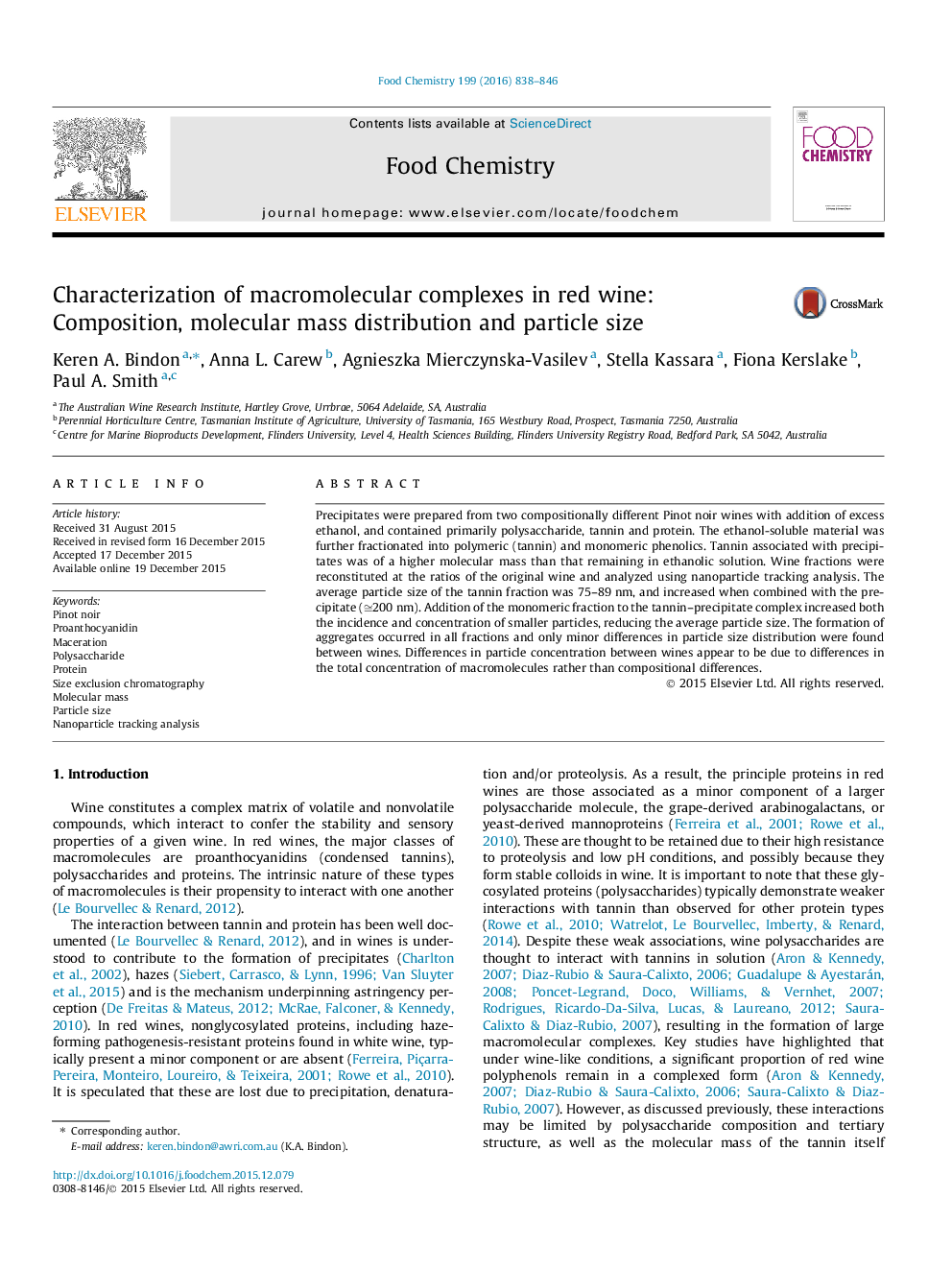| Article ID | Journal | Published Year | Pages | File Type |
|---|---|---|---|---|
| 7590137 | Food Chemistry | 2016 | 9 Pages |
Abstract
Precipitates were prepared from two compositionally different Pinot noir wines with addition of excess ethanol, and contained primarily polysaccharide, tannin and protein. The ethanol-soluble material was further fractionated into polymeric (tannin) and monomeric phenolics. Tannin associated with precipitates was of a higher molecular mass than that remaining in ethanolic solution. Wine fractions were reconstituted at the ratios of the original wine and analyzed using nanoparticle tracking analysis. The average particle size of the tannin fraction was 75-89Â nm, and increased when combined with the precipitate (â
200Â nm). Addition of the monomeric fraction to the tannin-precipitate complex increased both the incidence and concentration of smaller particles, reducing the average particle size. The formation of aggregates occurred in all fractions and only minor differences in particle size distribution were found between wines. Differences in particle concentration between wines appear to be due to differences in the total concentration of macromolecules rather than compositional differences.
Keywords
Related Topics
Physical Sciences and Engineering
Chemistry
Analytical Chemistry
Authors
Keren A. Bindon, Anna L. Carew, Agnieszka Mierczynska-Vasilev, Stella Kassara, Fiona Kerslake, Paul A. Smith,
